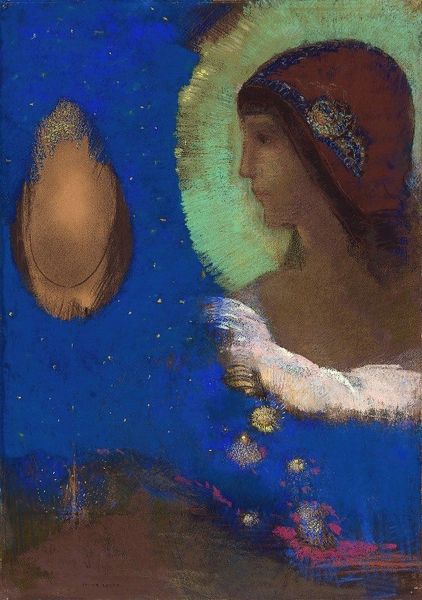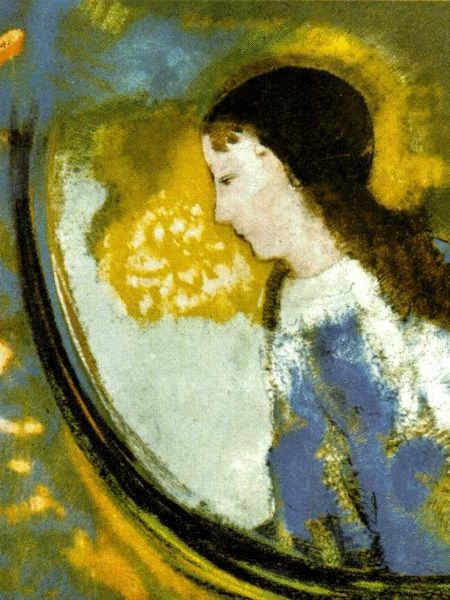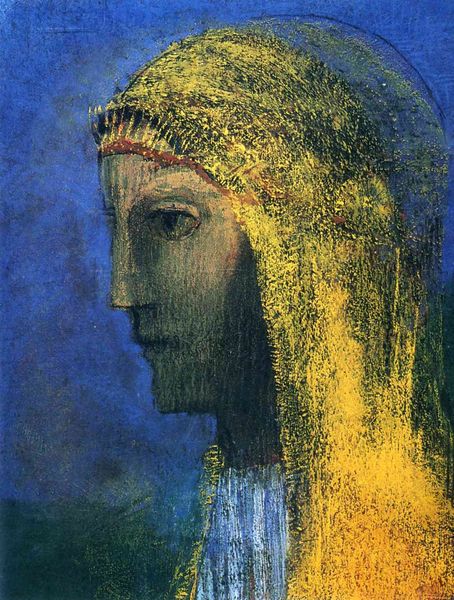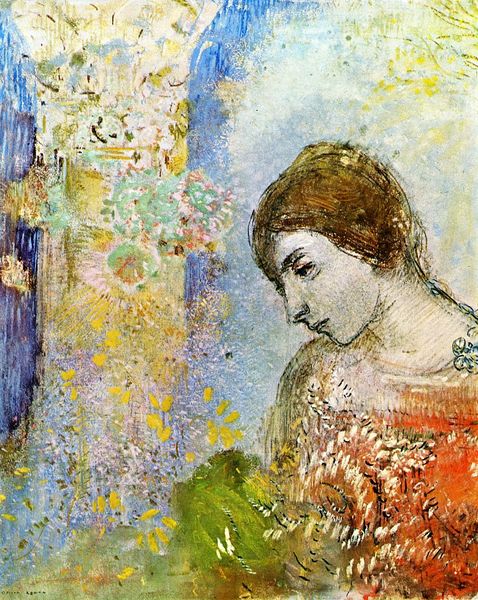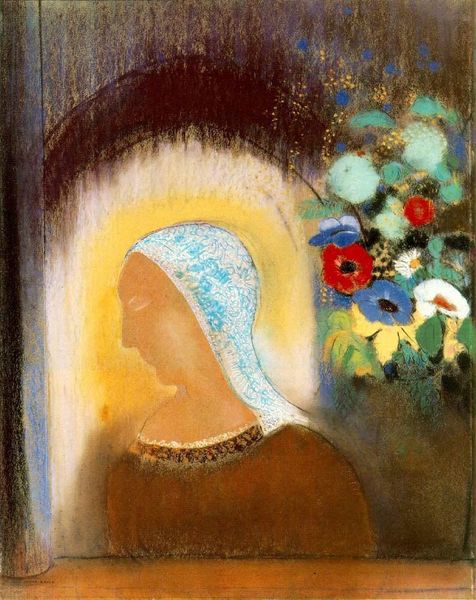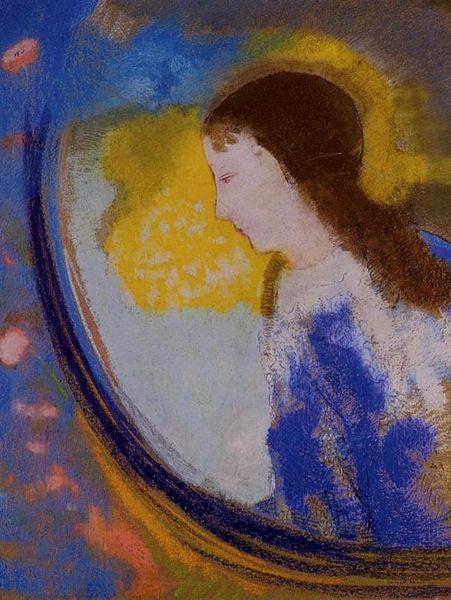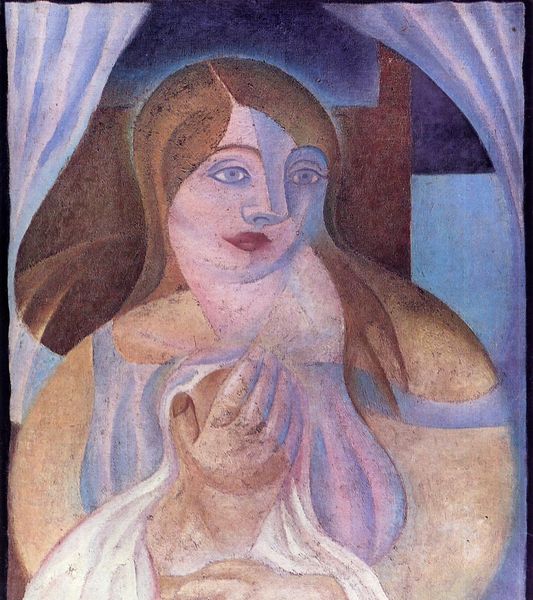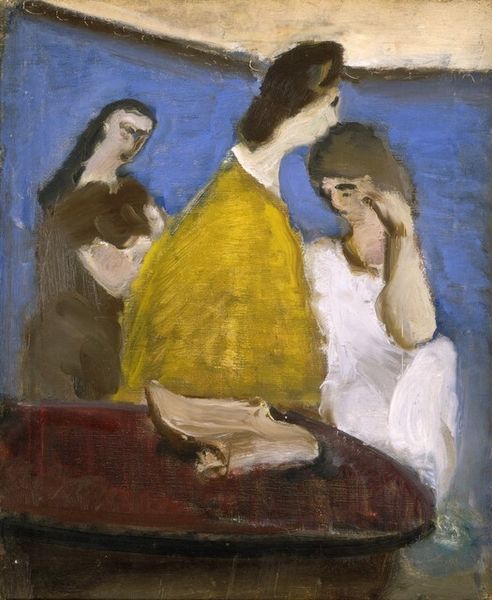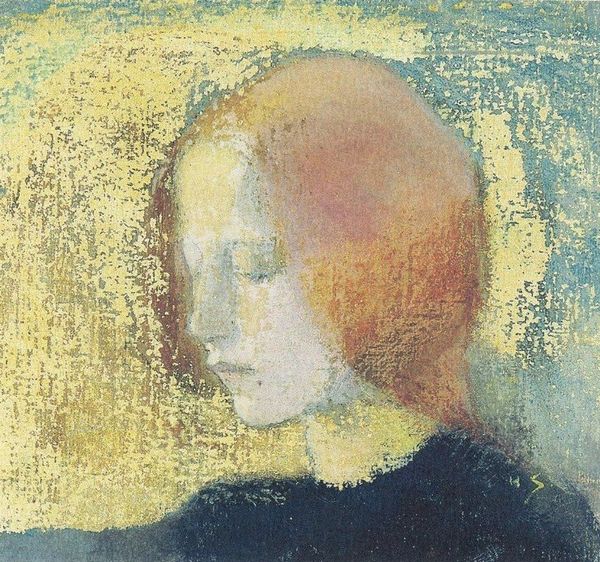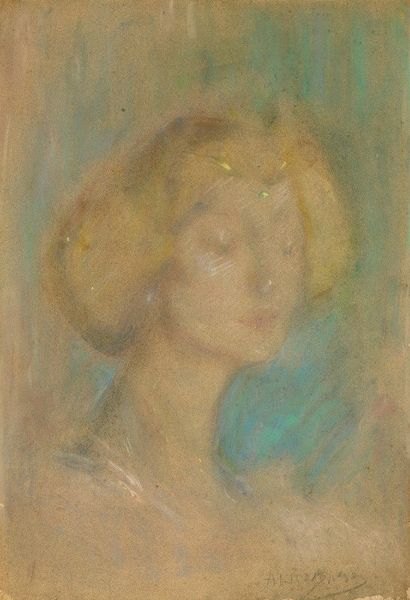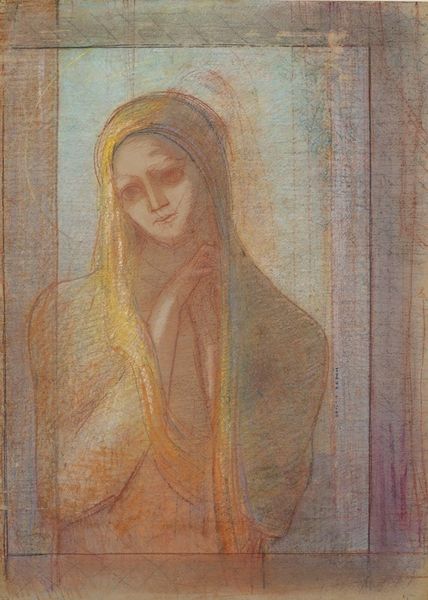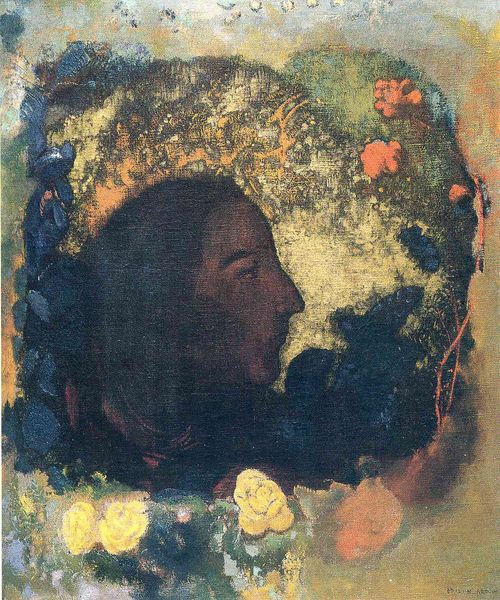
drawing, print, oil-paint, pastel
#
portrait
#
drawing
#
allegories
#
symbol
# print
#
oil-paint
#
neo-impressionism
#
landscape
#
painted
#
figuration
#
possibly oil pastel
#
oil painting
#
line
#
symbolism
#
pastel
Copyright: Public domain
Curator: Oh, what a powerful image! There’s a haunting yet luminous quality to it. Editor: Indeed. This is "Sita" by Odilon Redon, created around 1893. Redon was a key figure in the Symbolist movement, and this piece exemplifies his exploration of inner worlds through evocative imagery and colour. He worked in various mediums, and this particular piece appears to be rendered in pastel and possibly oil. Curator: Symbolism is absolutely right. You immediately get a sense of interiority. Her gaze, turned inward, against that dark, starry backdrop—it evokes feelings of longing, perhaps even a quiet defiance. The contrast with the glowing aura around her head… It makes me think about societal constraints placed upon women. It’s an allegorical portrait of resilience and the internal strength one finds amidst darkness. The subject herself, Sita, is of course, an important figure in Hindu tradition, known for her strength of character. Editor: It's fascinating how Redon uses pastel. The softness lends a dreamlike quality but examining the work reveals precise applications. It certainly plays with ideas around craft and refinement as social status, while simultaneously representing a mythic female figure central to religious history in Asia. It forces us to consider who has the time and financial agency to have such portraits created and venerated. Curator: Absolutely. The dreamlike quality is vital. It allows us to access the story and her narrative. I see her not just as a figure from mythology but as a symbol of marginalized voices. Consider, historically, who controlled narratives. "Sita" feels like a reclamation of a story through a different lens—a distinctly European, male lens but with elements of honoring the spiritual and mythological foundations. Editor: And that makes you wonder about Redon's knowledge of South Asian artistic techniques at that moment. How familiar was he with similar portrayals from their point of origin? It definitely presents questions around appropriation. Looking at the application, the materials used seem consciously chosen for their accessibility and availability at that time. Did that allow greater circulation, giving Sita an updated context and renewed viewership through the late 19th Century Parisian art scene? Curator: These layered meanings are precisely what make "Sita" so compelling, allowing us to examine the historical context while also interpreting it through contemporary perspectives. Editor: Agreed, understanding that production alongside reception opens us up to broader dialogue.
Comments
No comments
Be the first to comment and join the conversation on the ultimate creative platform.
